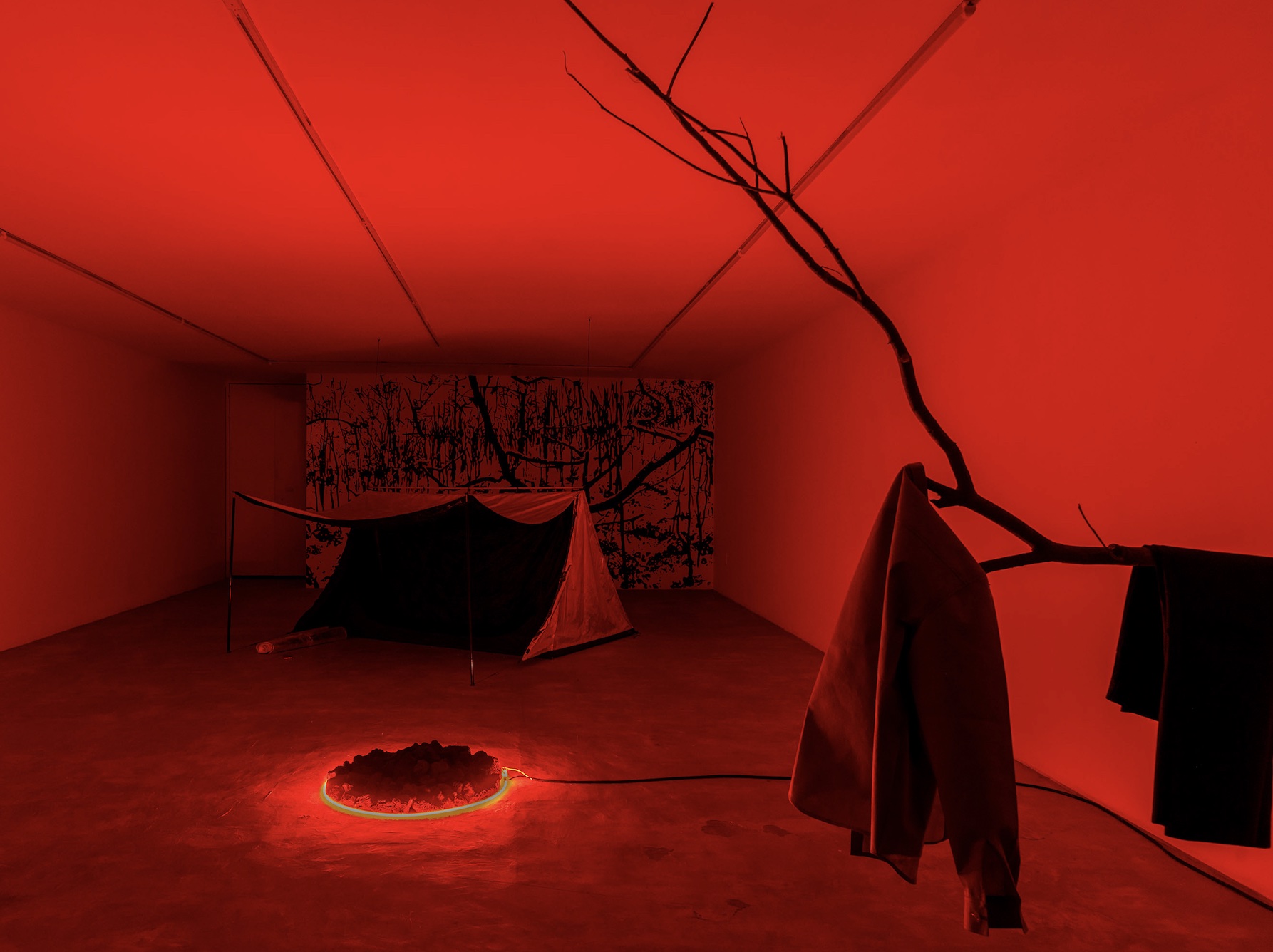
Review
Neo Noir. Raúl Rebolledo at Proyecto Caimán
by Lorena Peña Brito
Reading time
4 min
What is all of this loaded with? When I ordered the Uber, I recalled a photo of Miriam in front of a mirror. Red light. An image of M and I from behind at a party with Boy Harsher playing in the background. I thought I hadn't checked Instagram. I heard nothing and saw nothing. Arriving at Pablo Villaseñor's house I was surprised by the darkness and the reddish tone in the courtyard. The flier had silently slipped into my subconscious between wakefulness and a daydream. Throughout the journey, I pondered the relationship between gold and death that Raúl has spoken to me about for some years. It's eerie. Data and a golden gleam that initially activates like a lure. This gleam in a photograph is sometimes a radiant color. I sensed that perhaps there would be something of that. Power and disappearance.
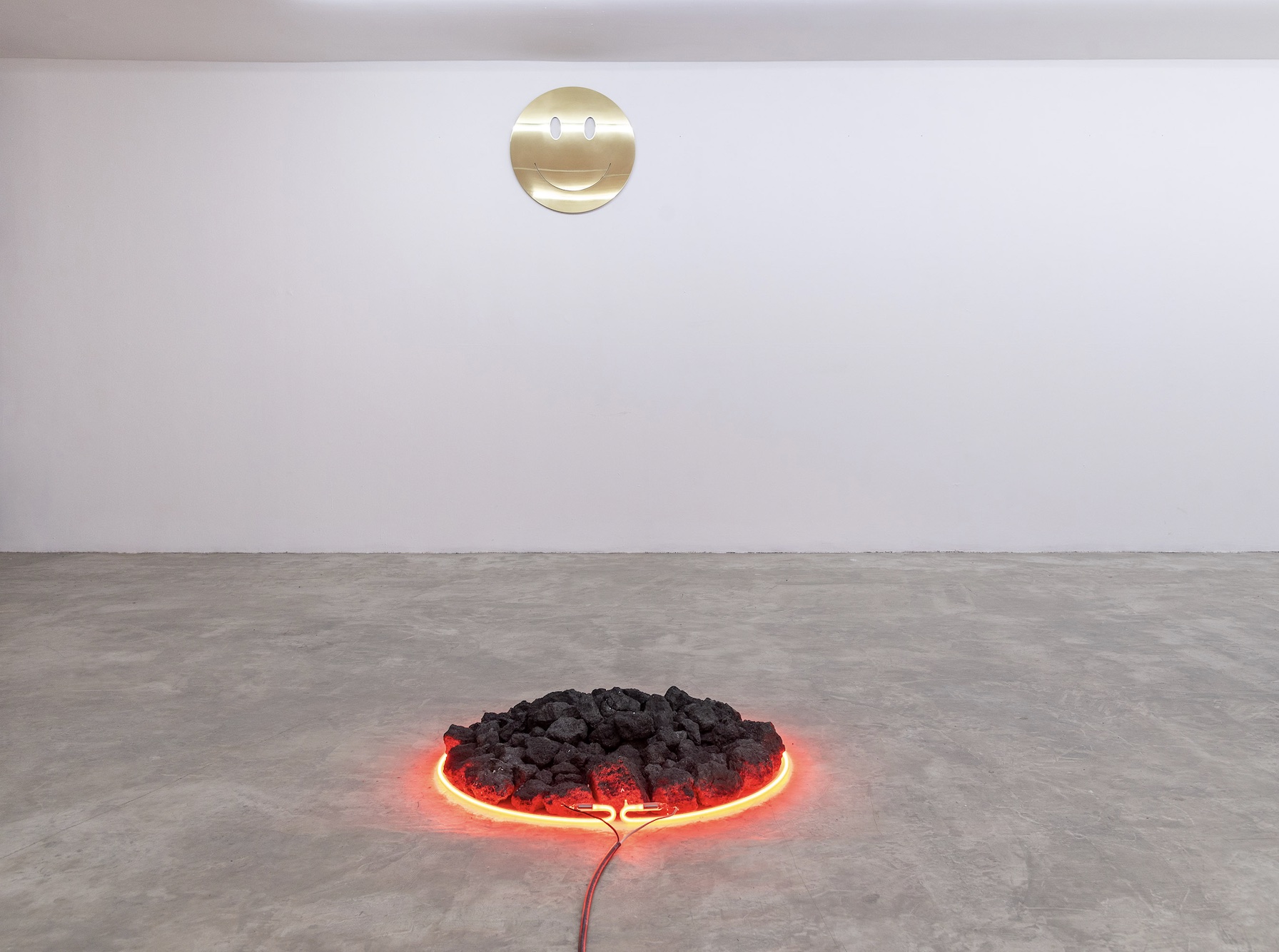
Now conversations take on a different meaning. In ¿Cómo podría saber que este sería mi destino? [How could I know that this would be my destiny?] the lights are woven with a shadow that falls over the entire body. The color of blood. Darker than blood. In Raúl's narrative, there's a kind of short story that unfolds to bring order to the images and ideas he has recently been navigating. This narrative is organized into an installation that reminds me of a movie. The installation is structured in different times: there's a nocturnal potency, another during the day.
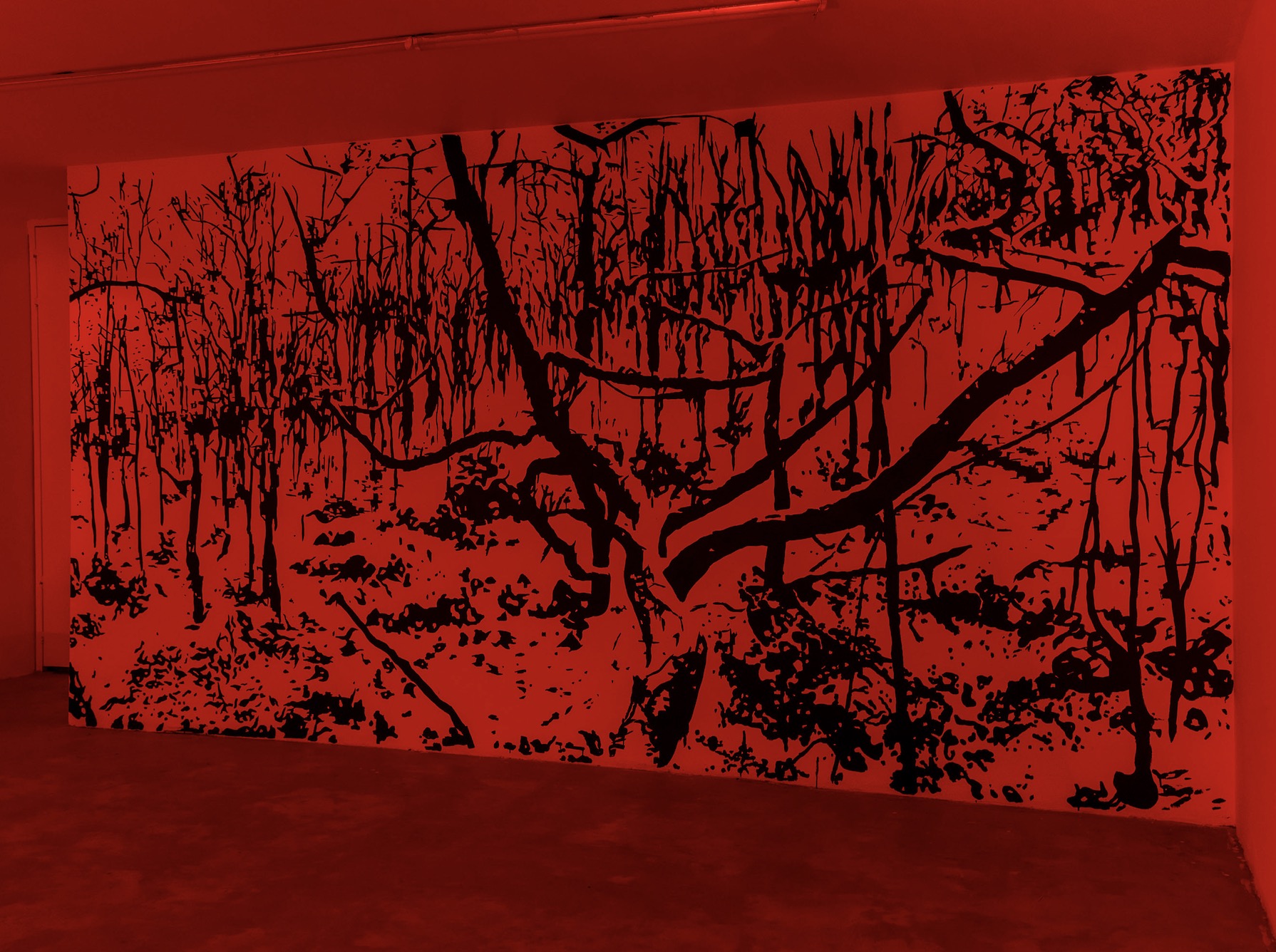
A metallic scene is framed against a monochrome forest. There's a tent covered in gold leaf that refuses to protect and instead focuses on remembering that which is valuable and that which is not. In the pieces that connect Raúl's stories, the fabric is a trap. A second skin, shelter, and a border between something that was alive and what persists. Decay, a constant ending, that which relentlessly falls off. Fortune and hope, Raúl?
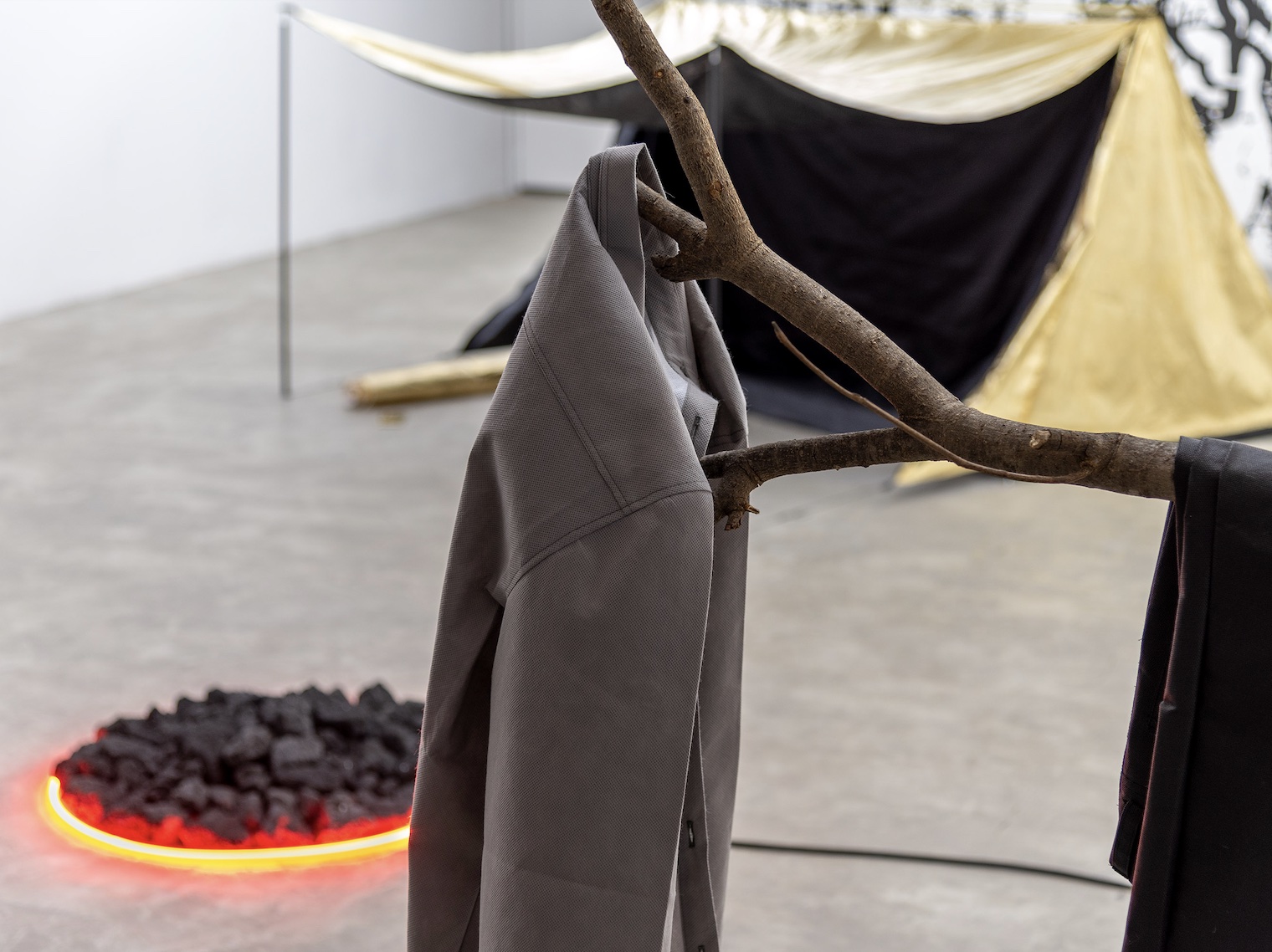
In this story, there's a man dressed as a corpse, or there was. The shell of a gilded cell phone. A bonfire that seems more like a black hole, the memory of an eruption that perhaps buried everything or will bury it. Neon that takes me to Brazil, leads me to Blade Runner, puts me in Fallen Angels and in the future where metal becomes futile. As futile and empty as the TV shows where the body of a white, slender, perfectly shaved girl is found under the foliage, with soil under her nails, and some stupid and manly detectives say incredibly boring things about what happened to that woman.
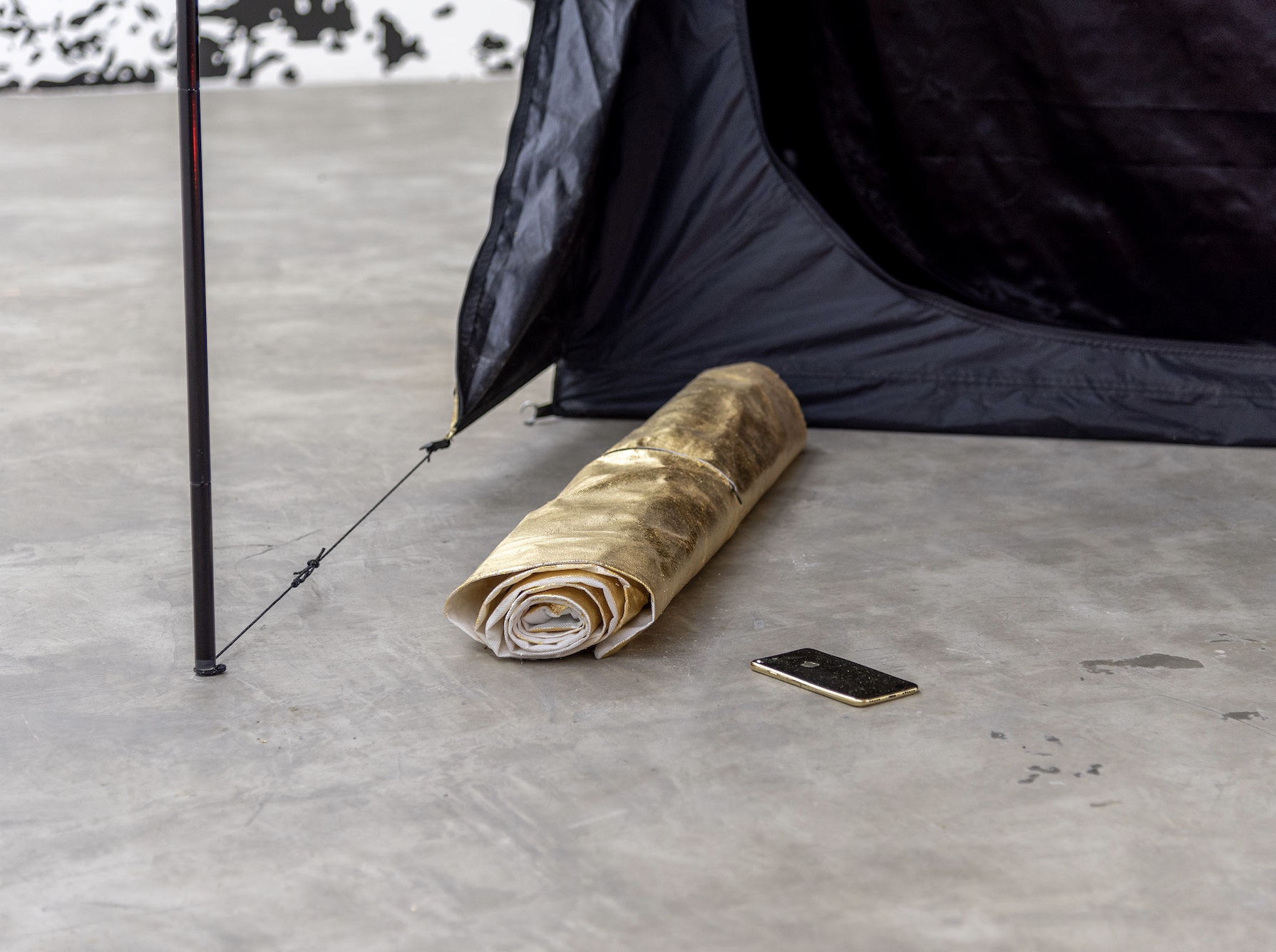
Miriam says in the text that I've read four times that solitude would be a privilege. But we are many. Too many bodies that roamed, a brother and a sister, a cousin, and a fatal destiny that Raúl sees in all the data. And I also see it in a horror party that could emerge right there, while we all dance under the red light and that smiling face, which is golden during the day and oozes away like in that video, Black Hole Sun. Miriam writes that if we stop it's because we are distracted by what has been promised, things we already know will happen and they happen even if we don't think about it too much. We believe we shouldn't think about it too much and that it doesn't matter if we perceive them, but they will happen. Like that red light, that night, and that desolation in a rural setting, a Mexican forest or desert, in the desolation of the future that Raúl read and in the certainty that this is an exhibition hall and everything will be fine. And maybe it’ll be when the light turns on, and it's not 10 PM like now, and there's daylight. Maybe then the installation will be more benevolent, more exhibition, more a gallery, like A said.
Translated to English by Sebastián Antón-Ojeda
My god is the sun
The days seemed to greet me with a smile
What I feared has become reality
I thought it was the end
Who am I supposed to be?*
How could I know that this would be my destiny?**
*Titles of the works that make up the installation
**Exhibition title.
Curator of the exhbition and text author: Miriam Hernández Hernández
Published on December 2 2023